Seven new giant bug species are extremely aggressive
Seven new species of katydids are among the largest and bulkiest insects in the world, a new study says.
In Madagascar, a female katydid displays a fighting stance.
Found only on the island of Madagascar, the bugs have the "biceps" of a bodybuilder and can be very aggressive—both surprising traits for katydids.
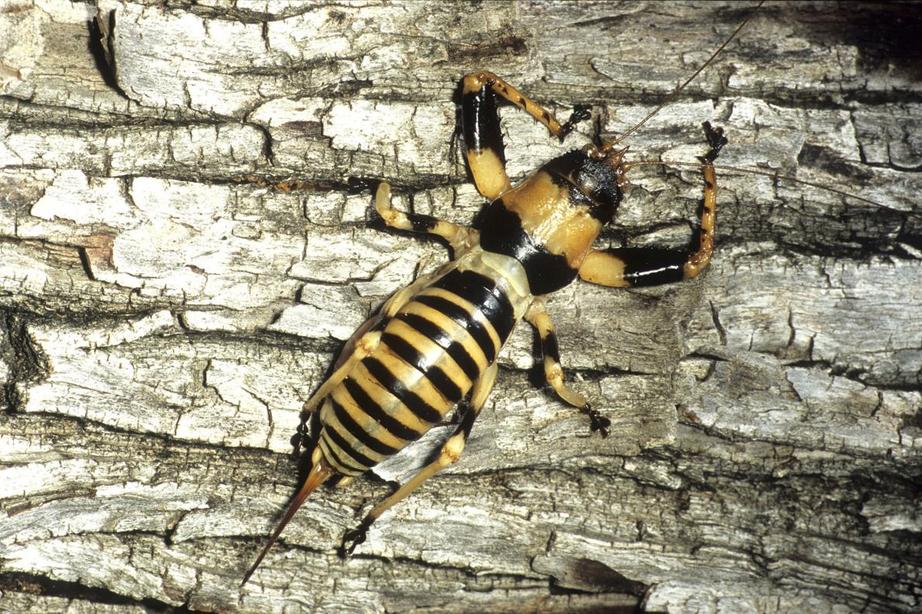
A new species of brighty colored giant katydid, Oncodopus brongniarti. The insects can reach lengths of over 2.5 inches.
Photograph by George Beccaloni
“If you get anywhere near them, they will try to grab you with their powerful forelegs and pull your finger toward their mandibles to give you a nasty bite,” says study co-author George Beccaloni, former curator of katydids and related insects at London’s Natural History Museum. (Beccaloni avoided such injuries by using long forceps to grasp the katydids.)
“I haven’t seen that defensive behavior in any other katydids."
Strange Bedfellows
Beccaloni and colleagues identified the new species based on museum specimens and samples collected from two trips to Madagascar’s dry forests.
On one expedition, Beccaloni was searching for cockroaches, his specialty, in sheltered areas under rocks and loose bark when he stumbled upon the strange katydids, which can reach lengths of nearly 2.5 inches. (Read about all-pink katydids discovered in Borneo.)
The carnivorous katydids could eat the cockroaches, but the two species appear to tolerate each other, notes Beccaloni, whose study appeared recently in the journal Zootaxa.
“Such shelters are scarce, and it's likely that both the katydids and cockroaches require them for protection against the intense daytime heat and predators,” says Beccaloni.
Lifelong Loves
Intriguingly, he found several male-female pairs katydids resting side by side—possibly a clue that the insects mate for life, he says.
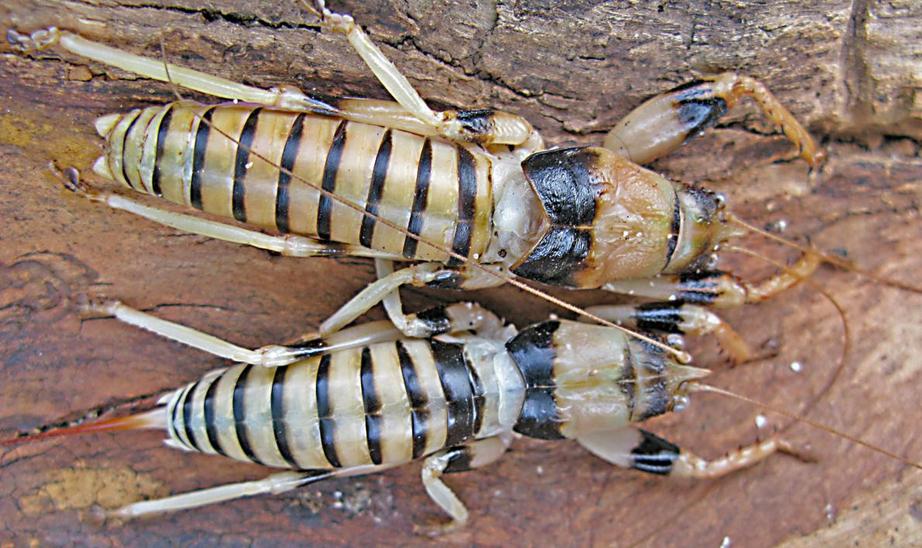
Some of the newfound katydids were discovered in male-female pairs (pictured, Oncodopus brongniarti) that suggest the insects could be monogamous.
Photograph by George Beccaloni
“The possible monogamous, long-term pair formation behavior recorded in this paper is unknown for any other crickets or bushcrickets [another term for katydids], as far as I’m aware,” Karim Vahed, an entomologist at the University of Derby in the U.K. who was not involved in this research, wrote in an email.
“Some crickets show short-term mate-guarding, in which the male stays with his recent mate for an hour or so in order to repel rival males.” (Read about a bushcricket with the world's biggest testicles.)
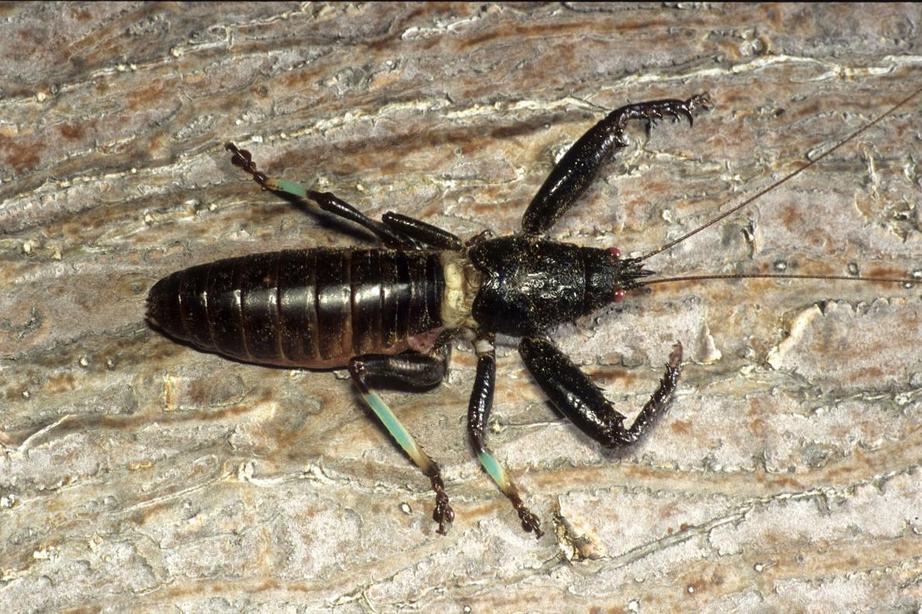
These giant katydids (pictured, the previously known species C. grandidieri) live in Madagascar's dry forests, which haven't been intensely studied by entomologists.
Photograph by George Beccaloni
Monogamy is rare among insects, but it is not unheard of. For instance, some burying beetles stick together to care for their young.
Study co-author Mustafa Ünal of Abant İzzet Baysal Üniversitesi in Turkey notes that with mate-guarding, males try to guarantee their own reproductive success while preventing other males from gaining access to their mate. "This behavior is definitely unusual in this primitive insect group."
Both experts agree that further research is needed, such as determining whether males follow females outside of their shelters.
Dry Forests in Danger
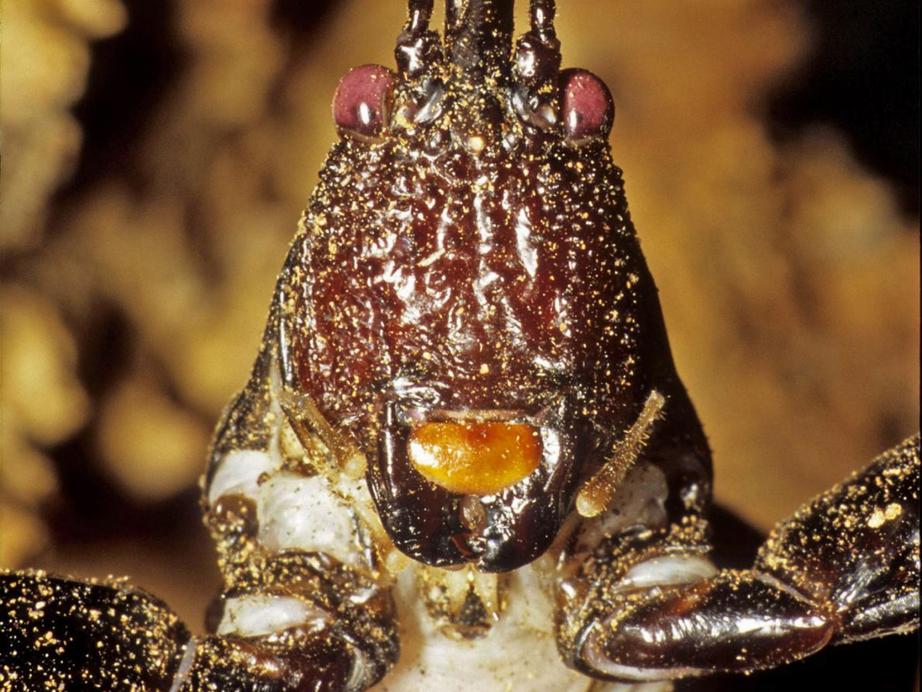
A close up of C. grandidieri, a previously identified species of giant katydid in Madagascar.
Photograph by George Beccaloni
It might seem odd that science is only now recognizing such huge insects.
That's partly because entomologists have focused mainly on the country's rain forests, rather than the dry forests that cover much of Madagascar. (This is why insects rule the world.)
“This is a shame, because the dry forests are even more unusual and special, yet few people know about them and the great threats they are facing,” says Beccaloni.
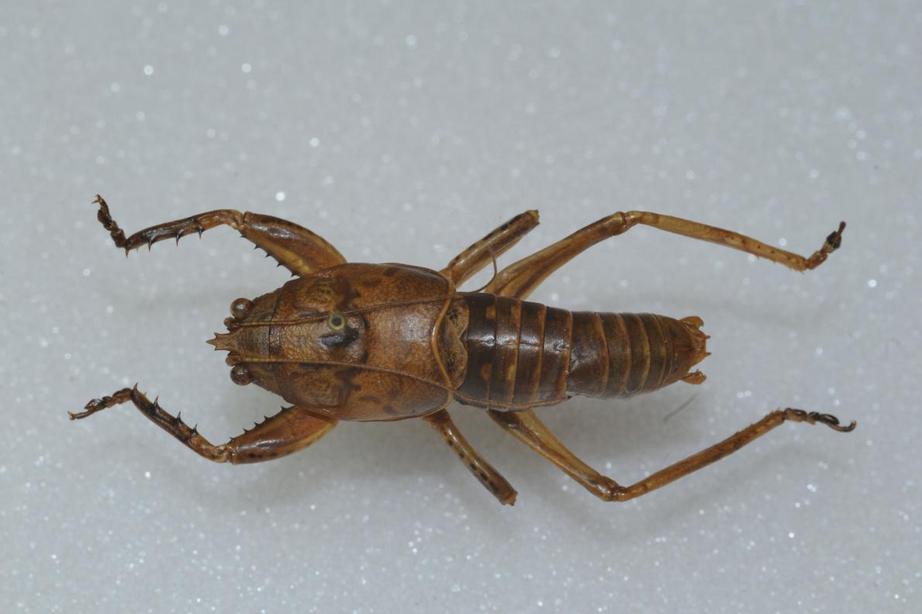
A specimen of one of the new species, M. desutterae.
Photograph by Mustafa Ünal
“Some of these habitats, like the spiny forest, are unlike anything else on the planet, with baobab trees, spectacular succulents, and octopus trees.”
The forests are shrinking due to human activities such as deforestation for charcoal, he adds.
“Considering how threatened Madagascar’s habitats are, it should be a priority to document all the species there before they disappear."
For the rest of this article please go to source link below.
